40 ink chromatography lab results
PDF Forensics: Ink Chromatography Lab Forensics: Ink Chromatography Lab 2015 Background: Chromatography is a method for analyzing mixtures by separating them into the chemicals from which they are made. It can be used to separate mixtures like ink, blood, gasoline, and lipstick. In ink chromatography, you are separating the colored pigments that make up the color of the pen. Lab Report for Chromatography Free Essay Example Projectile Motion Lab Report: Lab Assignment 1 Pages: 3 (762 words) Column and Thin Layer Chromatography Pages: 4 (1098 words) Chromatography and its Types Explanation Pages: 4 (1095 words) Plant Pigment Chromatography Pages: 3 (632 words) The Separation of Ink Chromatography Pages: 2 (365 words) Separation of Photosynthetic Pigments by Paer ...
Paper chromatography experiment setup. The simplest paper chromatography experiment at home is a paper chromatography of a black marker. On this page you'll find very simple setup with some details that allow you to achieve the best results separating your samples. You can compare this experiment with Thin Layer Chromatography setup for home. Perhaps you'll want to try both setups ...
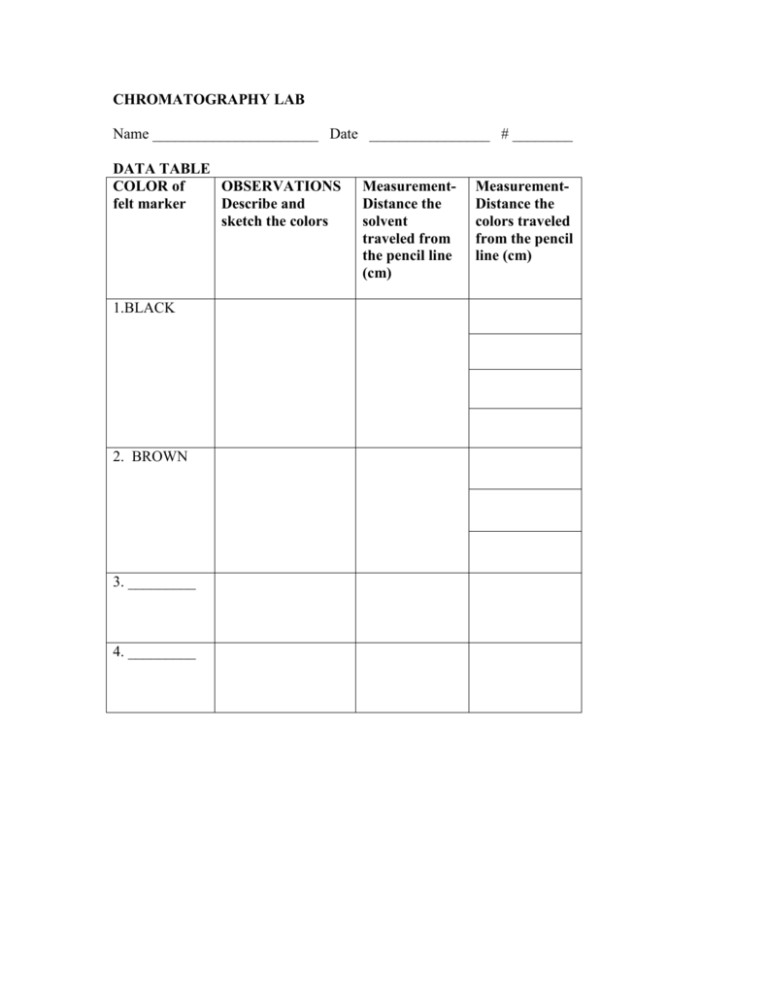
Ink chromatography lab results
Ink Chromatography - The Well-Appointed Desk Chromatography paper is incredibly absorbent, thinner than blotter paper, and a bit rough to the touch. Because it is so absorbent, it wicks up water easily. With ink chromatography, a small amount of ink is applied to the paper, one end is placed in water, and as the water works its way up the paper, the various colors of the ink are revealed. Lab 5 - Chromatography of Inks - Experiment - YouTube Separating and comparing three black inks using paper chromatography. Three unknowns are then compared to the three known inks. Sorry about the noisy lab fa... PDF Students use paper chromatography and calculate the retention factor of ... to separate mixtures like ink, blood, gasoline, and lipstick. In ink chromatography, you are separating the colored pigments that make up the color of the pen. Even though a pen will only write in one color, the ink is actually made from a mixture of different colored pigments. To perform ink chromatography, you put a small dot of ink to be
Ink chromatography lab results. Chromatography Experiment With Markers - Little Bins for Little Hands PAPER CHROMATOGRAPHY LAB SUPPLIES: Black markers Scissors Paper towel Bowl of water HOW TO SET UP CHROMATOGRAPHY EXPERIMENT STEP 1. Gather 4 different brands of black markers. STEP 2. Cut 4 strips of paper towel. STEP 3. Fill a bowl with water. STEP 4. Using one of the black markers, color a small square at one end of the paper towel. PDF Ink Chromatography Experiment - Warwick In this experiment, we will be investigating the different chemical compositions of a selection of inks. In order to achieve this, we will use an analytical technique, known as chromatography, to separate out the different mixtures of chemicals present in the ink. For this experiment, filter paper and a Ink Chromatography Reveals the Rainbow of the Black. Ink chromatography experiment shows that it made of pretty bright and vivid colors. Why this colors mixed together become black? White light is in fact a mix oflights of different colors. Your monitor made of tiny luminous dots. Each of them emits the light of certain color. It was found that eye is the most sensitive to the 3 main primary ... PDF Paper chromatography of inks and dyes - Institute for Emerging Issues 1. Cut appropriate size chromatography paper (~ 10.0 cm), handle by the edges 2. Mark a pencil (do not use ink) line (~2.0 cm) from the bottom, label a spot for each ink tested 3. Apply different inks or dyes (use capillary tubes for liquids) to the labeled spots on the pencil line. Record which liquid is at each spot into your lab book. 4.
Practical chromatography | CPD | RSC Education Mar 09, 2017 · Using chromatography to identify mixtures of dyes in an unknown ink. OCR GCSE (9-1) Twenty First Century Science Chemistry B: PAG 3 Using chromatography to identify mixtures of dyes in a sample of an unknown composition: WJEC Eduqas GCSE (9-1) Chemistry: Specified practical work: SP1B Separation of liquids by distillation and by paper ... Chromatography - RF Values[MarZ Chemistry] CHEMISTRY : Chromatography. RF Values . Background As described in the main chapter of this section, in paper chromatography there is what is known as the stationary phase which is the absorbent Chromatography paper and the mobile phase which is a liquid solvent (or mixture of solvents) used to carry the sample solutes under analysis along the ... PDF A Lab on Chromatography Inks Analysis - cbsd.org One drawback of using ink chromatography in forensic science is that it destroys the evidence. The document under suspicion must have areas cut from it so the ink can be analyzed. In summary, if an entire document has been written with the same ink, then tests applied to different portions of the document should produce the same results. PDF PAPER CHROMATOGRAPHY - Chem Lab A. This lab will be done as a collaboration between both lab pairs at a table. 1. One lab pair will use 2 parts isopropyl alcohol to 1 part water as a solvent (labeled 2:1 IPA). 2. One lab pair will use 1 part isopropyl alcohol to 2 parts water as a solvent (labeled 1:2 IPA). B. Each lab pair obtains two strips of chromatography paper about 2.5 cm
Pen Chromatography - Northern Arizona University Results: Close up of a chromatogram. In the chromatogram shown above, the paper used was a standard coffee filter, cut into a rectangular shape. The solvent was water, and the inks used were from highlighter pens, using yellow, pink, blue and green pens. PDF Lab #1: Paper Chromatography - MS. MKRTCHYAN Lab #1: Paper Chromatography pg. 4 (Note: You must calculate retention factor for each primary color of each black ink). Use the following example to complete your calculations for each of the black inks assigned to your group: R 1) Black Ink # _____ 2 R = Repeat this Calculation for all 4 Black Ink Results. 2) Black Ink # _____ Chromatography, Lab Report Example | essays.io Chromatographic Data Using 5% Isopropanol for BB RF = 6.3 cm/6.3 cm = 1 Results The best mobile phase for the pen ink was the 5% isopropanol, which is demonstrated by the fact that one of the spots travel the furthest. In addition, the results indicated that pen BB is made up of only one type of ink because it only has one spot. Chromatography - Analysing and identifying substances - AQA - GCSE ... In this chromatogram, the brown ink is made of a mixture of the red, blue and yellow inks. This is because the spots in the brown ink are at the same heights (and have the same Rf value) as the...
Paper Chromatography Report - BIOLOGY JUNCTION 2. What served as the solvent for the ink? Water served as the solvent for the ink. As the solvent traveled up the paper, which color of ink appeared first? The color orange first appeared as the solvent traveled up the paper. 3. List the colors in order, from top to bottom, which separated from the black ink.
Chromatography Lab - Activity - TeachEngineering (Answer: The separation depends on how soluble the ink in the marker is in either water or alcohol. The ink in the black marker is not soluble in water and therefore does not separate. This is also why this type of marker is considered a "permanent" marker—because it is water-insoluble and thus cannot be washed off using water!
Thin Layer Chromatography (TLC) Thin Layer Chromatography (TLC) TLC is a simple, quick, and inexpensive procedure that gives the chemist a quick answer as to how many components are in a mixture. TLC is also used to support the identity of a compound in a mixture when the R f of a compound is compared with the R f of a known compound (preferably both run on the same TLC plate).
LAB 7- Chromatography - Lab report - StuDocu Lab report experiment chromatography simran sharda dr. olga lavinda chm 1004 october 27, 2019 chromatography is an analytical technique commonly used for. ... Results. Sample Calculation. Ink is a liquid or paste that contains pigments or dyes that may dissolve in the solvent. The ink is likely to move during the Chromatography process and ...
Ink Chromatography - BIOLOGY JUNCTION Record all data in Data table 1. Calculate and record the Rf value for each color using the formula below. Rf = distance traveled by the compound / distance traveled by the solvent Data Table 1 Questions: 1. Which color of marker did you use? 2. which color separated out first from your ink dot? 3. Why did the inks separate? 4.
Individual Laboratory Report (Results and Discussion and Conclusion ... Unformatted text preview: Individual Laboratory Report (Results and Discussion and Conclusion)- Thin Layer Chromatography Lab Diana Nye Results Ransom Note Sharpie Sardet Traveled substance -> Solute Solvent Solute Solvent Solute Solvent Ethanol+H2O (80:20) .9 1.5 1.2 1.5 1.2 1.7 Ethyl Acetate+H2O (80:20) .3 2.7 .7 2.2 .2 2.1 Ethanol+H2O (50:50) .5 1.6 1.1 1.6 1.1 1.6 Ethyl Acetate+H2O (50:50 ...
PDF PAPER CHROMATOGRAPHY - Truman State University A. This lab will be done as a collaboration between both lab pairs at a bench. 1. One lab pair will use 2 parts isopropanol to 1 part water as a solvent (labeled 2:1 IPA). 2. One lab pair will use 1 part isopropanol to 2 parts water as a solvent (labeled 1:2 IPA). B. Obtain a strip of chromatography paper about 2.5 cm wide by 10 cm tall.
Easy Ink Chromatography - Experiment At Home - Scitech Test the note Cut a strip from the note (approx. 3cm x 12cm) as evidence. For best results, cut a piece that has a question mark or other punctuation marks written on it. Fill one glass about halfway with water. Place the strip of note into the glass, with the bottom of the paper in the water.
Chromatography Experiment | IFST Chromatography is a technique used to separate components in a mixture and can be used to partially identify the components. In this experiment using paper chromatography, mixtures of food colours extracted from 'Smarties' will be separated and compared with a set of standard food dyes by observing the movement of the individual extracted colours up a sheet of paper using an aqueous salt ...
Paper Chromatography: Is Black Ink Really Black? | Science Project Allow the chromatography strip to dry, then measure (in centimeters) and calculate the R f value for each pen/marker dye component. Record your results in your lab notebook. Tip: The equation for calculating the R f value is given in the Introduction. Repeat steps 5 - 8 until you have run all of the chromatography strips.
Ink Chromatography Lab Background Information - GraduateWay Before you complete the rest of the lab, make a prediction of the pigment components you expect to see from each marker's ink. Prepare the salt solution by mixing 1/8 teaspoon of salt and three cups of water in a clean pitcher or 2-liter bottle. Stir or shake the solution until it is dissolved. This will produce a 1% salt solution.
2: Paper Chromatography of Gel Ink Pens (Experiment) Let excess eluent drip into the beaker. Gently remove the tape and lay the chromatogram on a piece of paper towel in the hood. Leave the paper in the fume hood, where it will dry completely. If needed, use a heat lamp (in the fume hood) to dry the chromatogram; if using the heat lamp, allow 5-10 minutes to dry.
Paper Chromatography Experiment - Science Sparks Different dyes in ink travel through the chromatography filter paper at different speeds. The most soluble colours dissolve and travel further and faster than less soluble dyes which stick to the paper more. Extension task Experiment with different types and colours of pens, dependng on the typ of ink used, some will work better than others.
Ink Chromatography Lesson : 7 Steps - Instructables Step 2: Cut a Strip of Filter Paper From the Coffee Filter and Using the Marker Draw a Thick Line Near the Bottom of the Filter Paper- About 1/4 Inch From the Bottom. Once this is completed, carefully attach the strip to the pencil in order to suspend the strip over the water in the beaker.
Utilizing Thin-Layer-Chromatography in Ink Analysis However, most ink analyses run by forensic labs have the main aim of determining whether two samples of text were written by the same ink source. So, comparing the make-up of two inks is the major aim of analyses run by forensic investigations into inks. Using thin-layer chromatography to analyze ink
Identifying Amino Acids By Using Paper Chromatography Biology ... Using the results obtained, the Rf values of the amino acid standards and of the unknown were calculated. Hence the composition of the unknown could be identified. Precautions. The line on the filter paper was drawn using a pencil. This was done because if ink was used it would have been dissolved in the solvent.
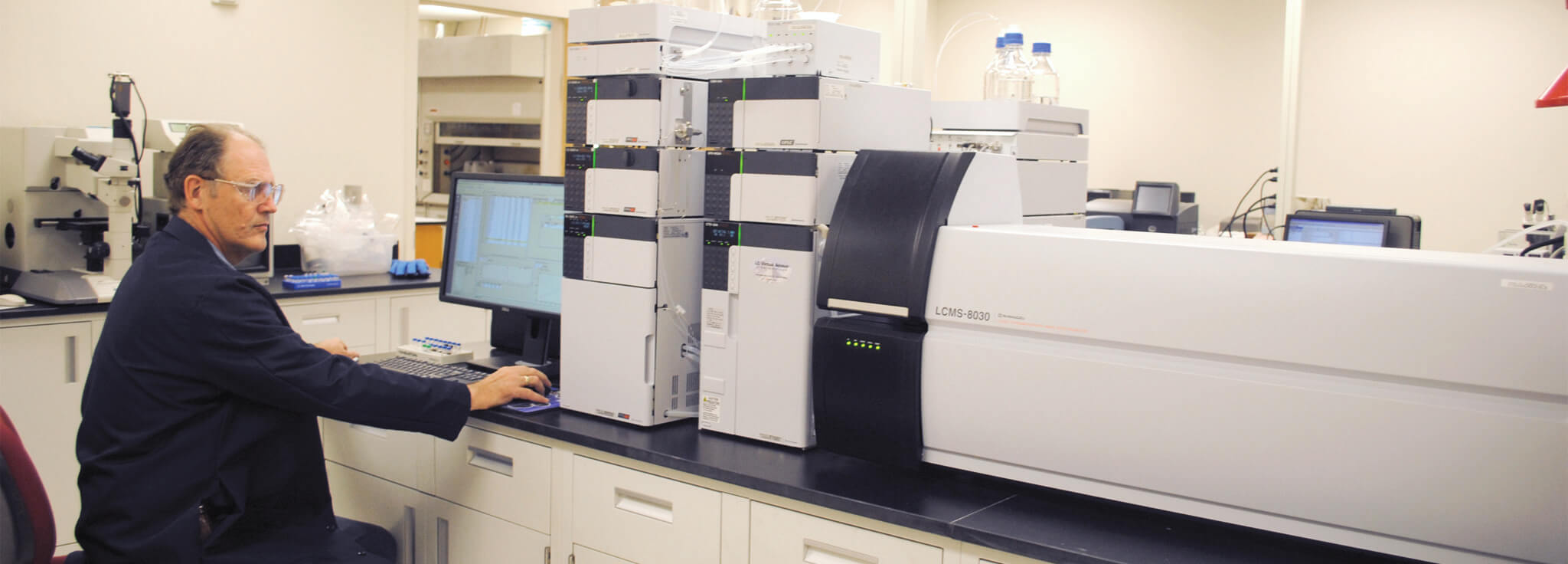

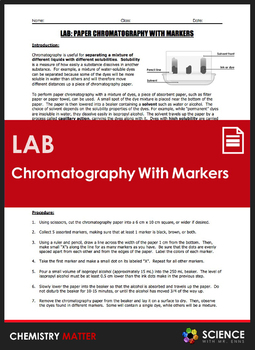

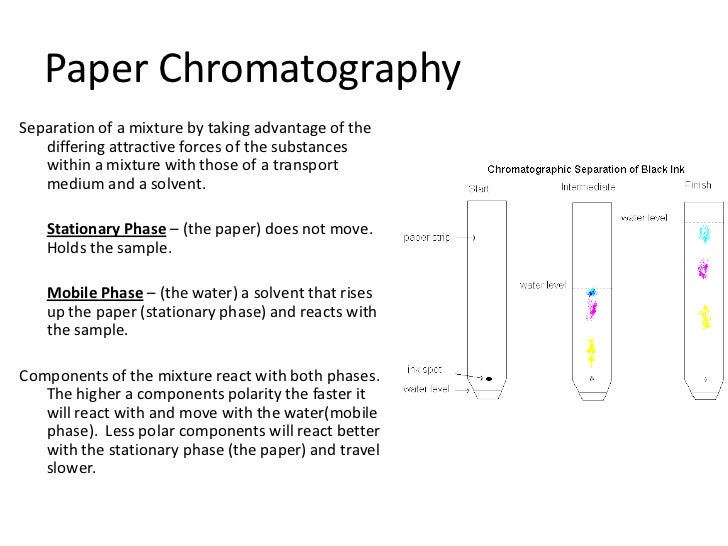
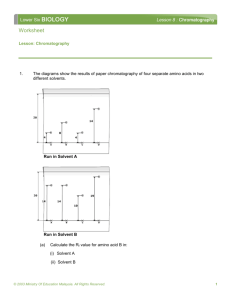



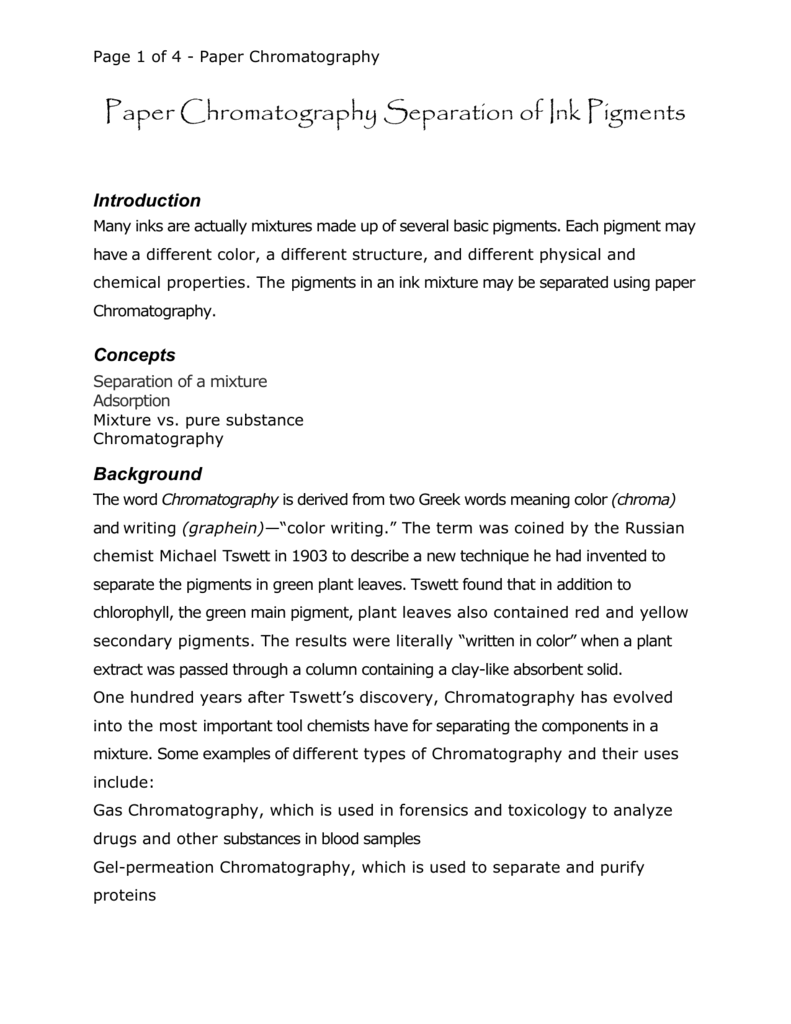
0 Response to "40 ink chromatography lab results"
Post a Comment